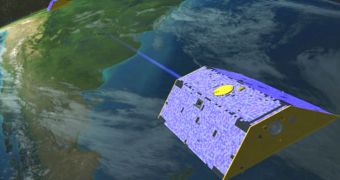Top officials from the American space agency NASA and the German Aerospace Center (DLR) met recently in Berlin, where they decided to continue their collaboration on the GRACE mission. The satellite has been in orbit for more than 8 years, and its contribution to the field of gravitational studies has proven to be invaluable. This is why American and German project participants decided to extend the mission through the end of its on-orbit life. This is expected to be achieved in 2015.
The new agreement was signed by DLR Executive Board Chairman Johann-Dietrich Worner, and NASA Deputy Administrator Lori Garver. The American agency also collaborates with the DLR on the Stratospheric Observatory for Infrared Astronomy (SOFIA) project, which is a recently-commissioned airborne telescope. The two parties jointly decided that the data flow the Gravity Recovery and Climate Experiment (Grace) mission provides should be preserved by as much as possible.
“The extension of this successful cooperative mission demonstrates the strength of the NASA-DLR partnership and our commitment to continue working together in this very important area of Earth science,” Garver said at the ceremony. The two satellites making up the mission were launched back in March 2002, and they generate data by flying on the exact same orbit, except separated by 220 kilometers (137 miles). They keep a close eye on each other, and their instruments detect minute variations in how they are pulled down by Earth. The precision level for these measurements is outstanding, just one hundredth the width of a human hair.
Scientist at the NASA Jet Propulsion Laboratory (JPL) in Pasadena, California were in charge of developing the outstanding vehicles. The space agency also provided selected satellite components, instruments, and data validation and archiving services. The DLR contributed primary satellite components, launch services and operations. “The extension of this successful mission will deliver more valuable data to help us understand how Earth's mass and gravity varies over time. This is an important component necessary to study changes in global sea level, polar ice mass, deep ocean currents and depletion and recharge of continental aquifers. We appreciate the strong cooperation with our partner NASA,” Worner said.

 14 DAY TRIAL //
14 DAY TRIAL //